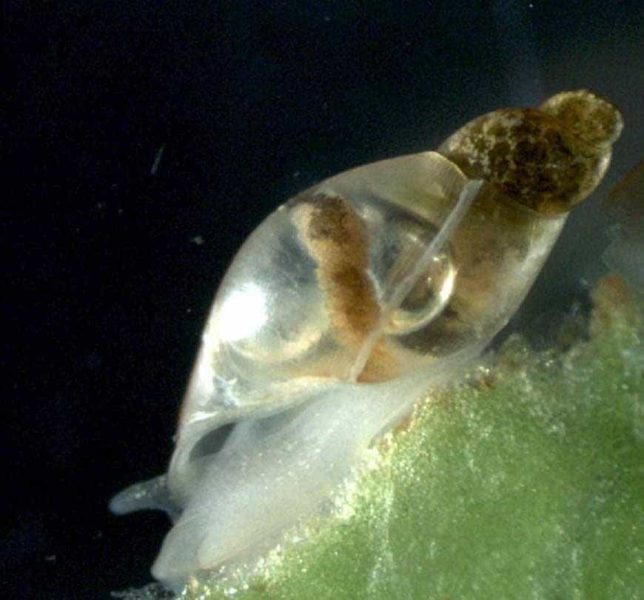To gain insights into the risks associated with uranium mining and processing, U.S. Geological Survey scientists are investigating how uranium moves into and up food chains.
USGS scientists found that living organisms can take up uranium into their tissues under a broad variety of water quality conditions. This knowledge may help regulators better safeguard the environment for conservation and resource extraction purposes.
“In order to understand the risk of uranium toxicity to living organisms, scientists need to understand how or if uranium compounds are taken up by aquatic organisms whether through diet, or directly from the waters they live in, and which uranium compounds are most available to living organisms under different environmental conditions,” said USGS biologist and lead author of the study, Marie-Noële Croteau.
In a laboratory study using snails, USGS scientists investigated the pathways for how uranium could end up in the tissues of living organisms, and learned that the bioavailability of dissolved uranium is less with increasing alkalinity, increasing water hardness, or when dissolved organic matter is present. Once accumulated in an organism, the loss of uranium from tissues is slow, which typically causes the accumulation of metals to rise to high levels over the life span of the organism.
Uranium compounds dissolved in stream water are bioavailable, meaning they can accumulate in living organisms, under a broad range of natural conditions. USGS scientists investigated how biogeochemical environment factors control uranium bioavailability.
Key results in this laboratory study showed that dissolved uranium was bioavailable in all cases but to varying extent depending on the geochemical conditions tested. In contrast to previous published studies that relate particular uranium species (or compounds) to bioavailability, scientists found that reduced bioavailability of uranium in hard freshwaters may be explained by the abundance of selected forms of uranium, such as uranium bound to both calcium and carbonate.

The pond snail, Lymnaea stagnalis was used experimentally to study the effects of uranium in the environment. The experimental snails are 5-8 mm long.
Marie-Noële Croteau, U.S. Geological Survey
Relationships between bioavailability and bioaccumulation can be studied in the laboratory with test organisms chosen to be surrogates for a broader group of species. The recent research describes a series of laboratory studies conducted with the pond snail Lymnaea stagnalis, which is related to the endangered Kanab amber snail (a species native to Grand Canyon National Park). In laboratory studies, scientists used a range of exposure conditions that mimic conditions expected to be seen in nature. One of the tested waters was specifically designed to simulate the geochemical conditions relevant to Kanab Creek, a stream located in the watershed that drains a portion of the withdrawal area near Grand Canyon National Park.
Although uranium has long been recognized as a danger for living organisms, very little was known about the physical and chemical pathways uranium takes to enter the food web. When then-Secretary of the Interior Ken Salazar declared a 20-year moratorium for new mining claims on federal lands adjacent to Grand Canyon National Park in 2012, he turned to the USGS to address uncertainties in the ecological impact of uranium mining. This study continues to investigate those uncertainties.
The full report by Marie-Noele Croteau, and others, “Biogeochemical controls of uranium bioavailability from the dissolved phase in natural freshwaters,” was published in the journal Environmental Science & Technology, and is online.


